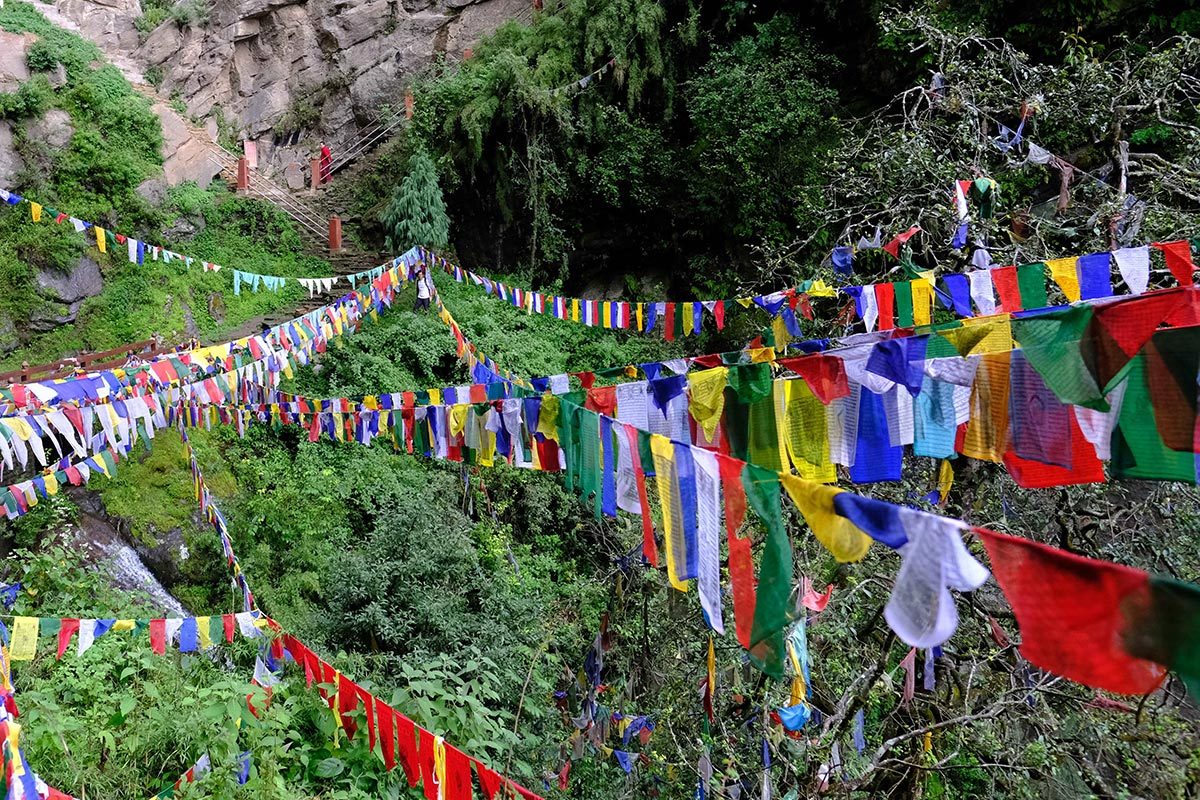Plenty of things to do in Bhutan and keep you busy for a while, here’s basically the itinerary I did in three days to Bhutan
Day 1: After being picked up from the airport we drove through Paro and stopped on the way to the hotel to look at some local life, which might seem boring, but it’s nice to see people actually talking to one another, without their faces buried in their phones. You’ll see a lot of guys doing archery, which is the national sport of Bhutan. Great to stop and have a bit of a watch, the locals don’t care you’re having a perve, so don’t feel like you’re interrupting them. Checked into the hotel, bit of a change and then off to Kyichu Lhakhang.
Kyichu Lhakhang – Also known as Kyerchu Temple or Lho Kyerchu, this is one of the oldest temples in Bhutan built in the 7th century. Not the best temple you’ll see in Bhutan but a good intro. We then headed to Paro National Museum (Ta Dzong). Firstly, I’m not really into history and that kind of thing. This is worth a visit though and good to see, but unless you’re really into your history you won’t need to spend much time here. I wouldn’t say it’s a must see, but since it’s basically in the city/town, it’s definitely worth going to. Those who haven’t experienced much of Asia will probably appreciate it a lot more.
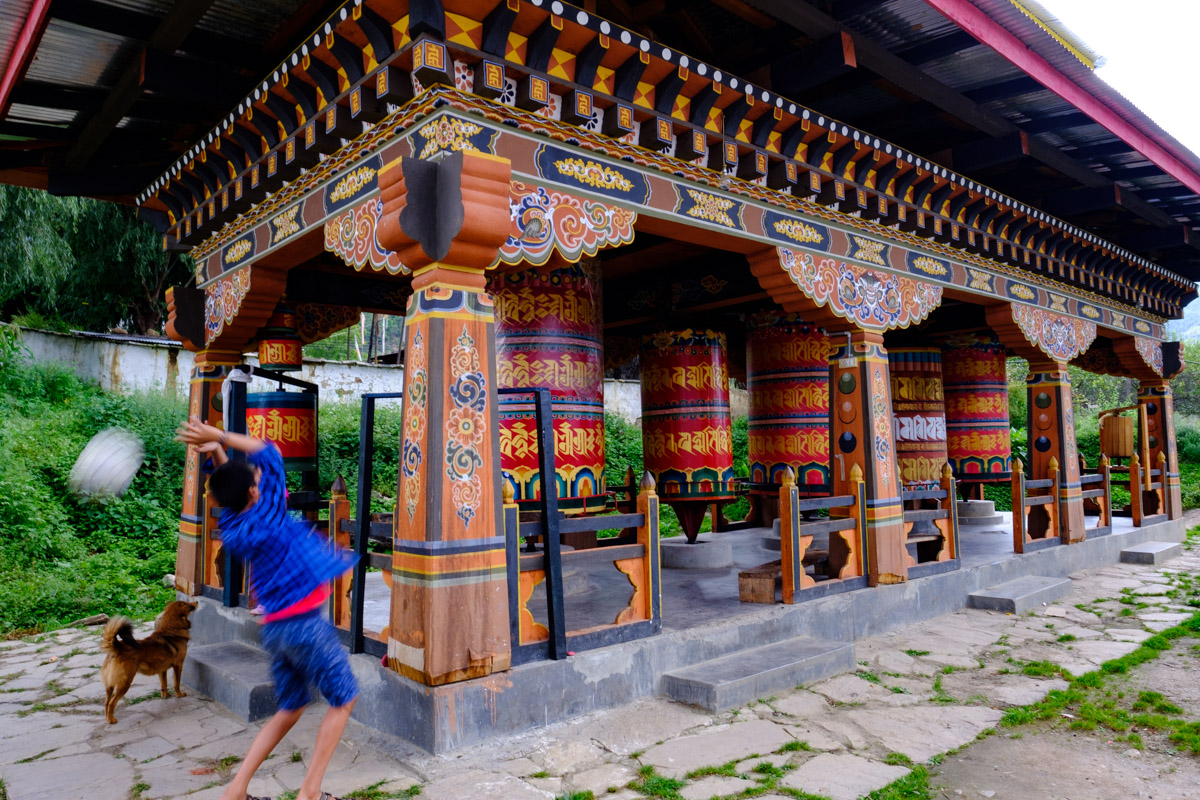
Next up, Paro Dzong (aka Ringpung Dzong) the locals call the ‘fortress of a heap of jewels’. Built in 1646 by Zhabdrung Ngawang Namgyal, the dzong stands on a hill above Paro Township . It’s linked by the traditional cantilever bridge (called the Nemi Zam) over the Pa Chu where you can get some good photos looking back up. Back to the hotel (Zhiwa Ling), which you can read more about here. Basically a wicked hotel, I saw one other guest the entire time I was there – which is paradise for me!
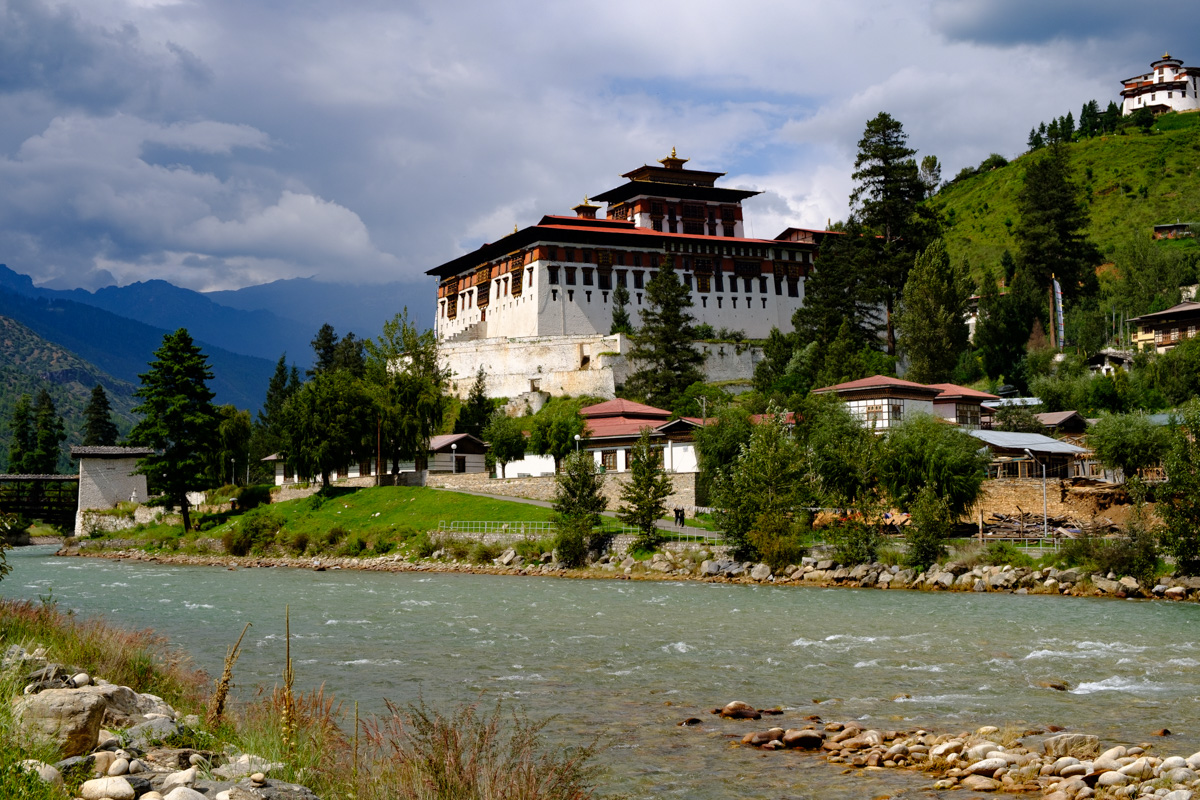
Things to Do in Bhutan – Paro Dzong
Day 2: Took a trip over to Thimphu, here’s the itinerary:
Situated at an altitude of 2400m, Thimphu is the centre of government, religion and commerce. The capital has an interesting combination of tradition and modernity, and includes some of the most advanced and remotest parts of the kingdom. It is home to the Kings and the Royal family members, civil servants, expatriates, politicians, business persons and monks. Thimphu is one of the things to do in Bhutan that you shouldn’t miss.
The driver over to Paro is beautiful, roads are fine and make sure to ask your driver to stop anyway on the way that looks nice. First stop was Buddha Point which is located at Kuenselphodrang Nature Park, the 169 feet bronze statue of Buddha Dordenma, Vajra Throne Buddha makes it one of the largest statue of Buddha in the world. The Buddha Dordenma symbolizes indestructibility, and it’s said to emanate an aura of peace and happiness to the entire world. The Buddha statue will be completed soon, currently awaiting for the completed paintings but visitors can drive up to the Buddha point and view the tallest statue of Lord Buddha. The view of Thimphu valley from the Buddha point is spectacular, not the best view I’ve ever seen, but well worth going up for just the view.
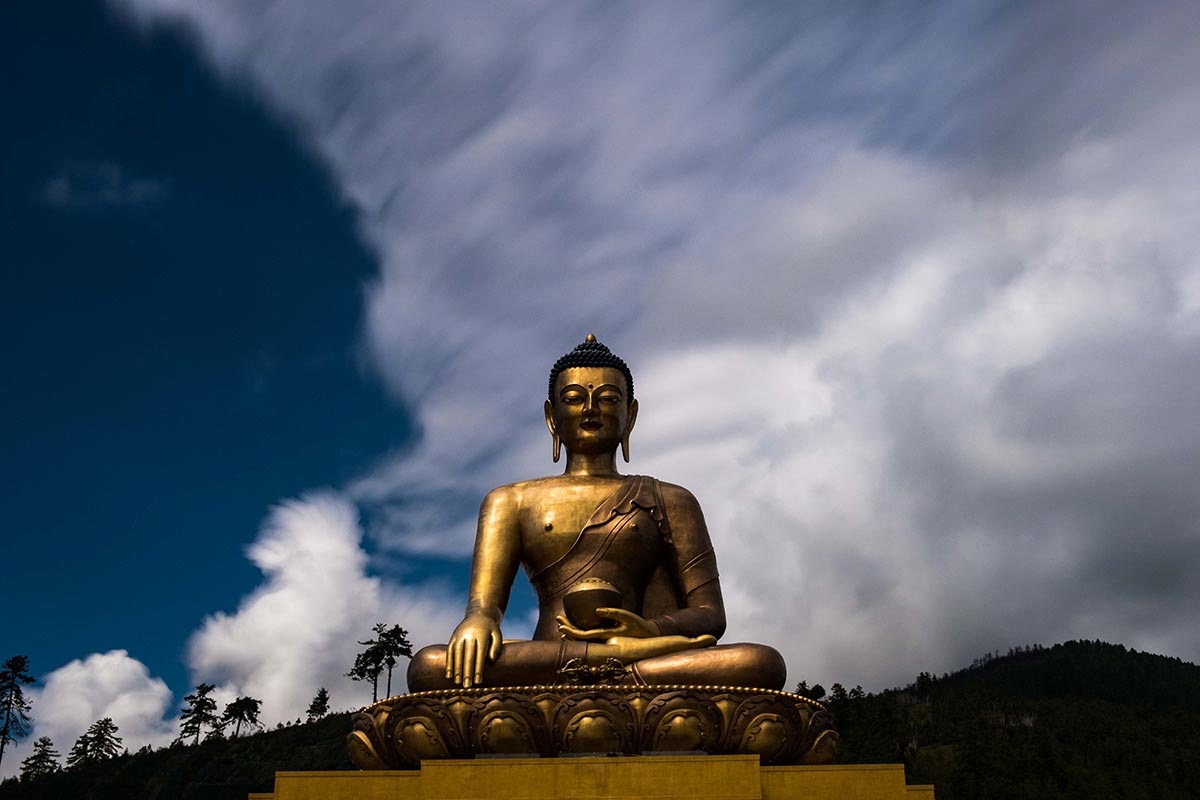
Things to Do in Bhutan – Buddha Dordenma
The National Memorial Chorten is where you can see the elderly generation in circumambulation at the National Memorial Chorten. Chorten means ‘Seat of Faith’ and Buddhists often call such monuments, the ‘Mind of Buddha’. Treat yourself with the fantastic depiction of Buddhist teachings in the form of paintings and sculptures at this temple. As the name denotes this National Memorial Chorten was consecrated on July 28, 1974, in memory of the Third King. This is really fascinating and I enjoyed taking photos here.
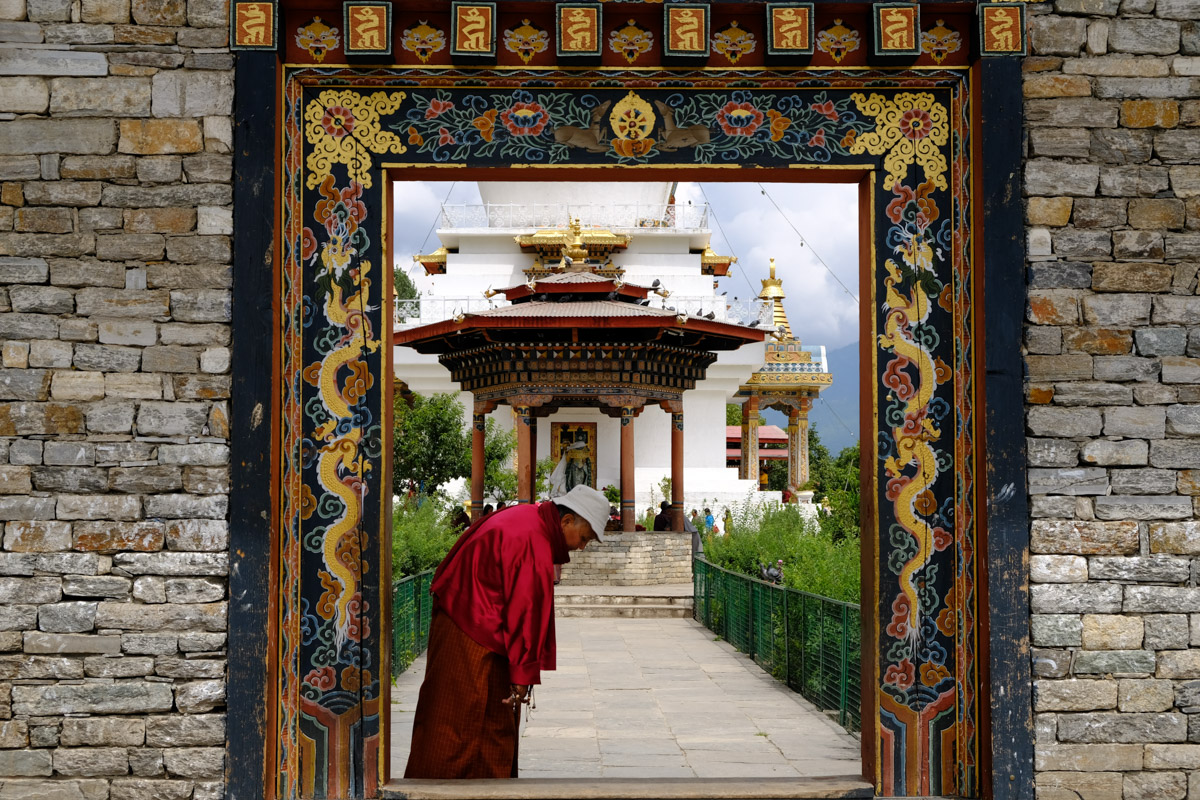
Things to Do in Bhutan – National Memorial Chorten
Institute of Zorig Chusum – Commonly known as the Painting School, or the School of the Thirteen Arts, the Institute offers you a glimpse of novices learning 13 traditional arts and crafts of Bhutan. Not one of the must-do things to do in Bhutan but it’s not out of the way so give it a go.
Folk Heritage Museum – This is a replica of a traditional Bhutanese house as it would have looked 100 years ago, and as many Bhutanese families still live to this day. It’s one of the few touristy things I saw and honestly I’d give it a miss, unless you want a bit of entertainment and see the guide stutter her way through trying to explain what the penis sculptures are. If you’re running short of time or have other things planned, give it a miss, it’s probably the last thing I’d do on my list of things to do in Bhutan.
Day 3: Taktsang Palphug Monastery (Tigers Nest)
I’ve lived in Asia for over 20 years and seen my share of temples and religious sites but the Tiger’s Nest is unlike anything I’ve ever seen and one of the most unique and special attractions/places I’ve come across anywhere in the world. Do yourself a favour and hike up (don’t use the horses), it’s about an hour up at a quick pace but if you prefer to take it easy it’ll take you a few hours, maybe more, if you’re not fit/don’t exercise much then you might struggle a bit but its not back breaking and doable at your own pace. Rather than try to describe the place it’s best you see for yourself but this in itself is worth visiting Bhutan and I highly recommend it to anybody wanting to see something very, very special.
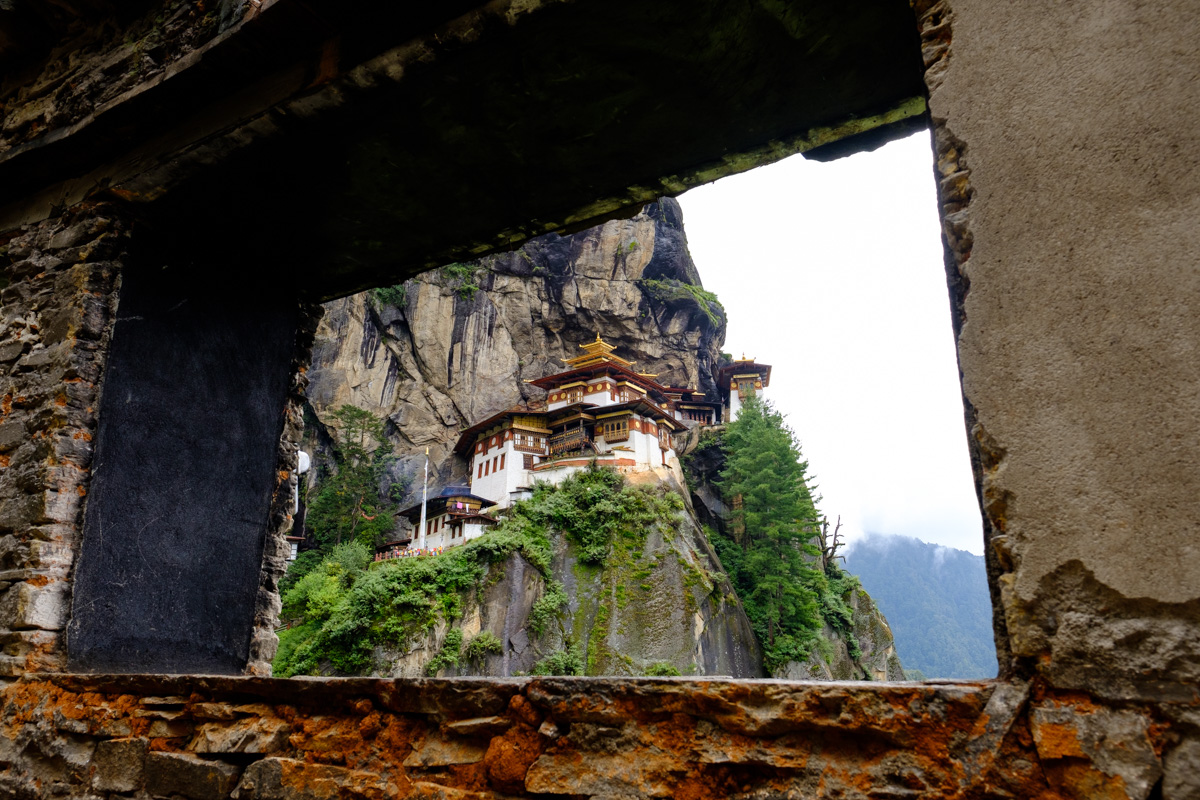
Things to Do in Bhutan – Tigers Nest
You need to book your Bhutan holiday through a travel agent so they’ll give you an itinerary with things to do in Bhutan but no doubt all these will be on the list for Paro and Thimphu.
Go back to the Bhutan destination guide here.
Also check out the Tourism Council of Bhutan’s website here.

